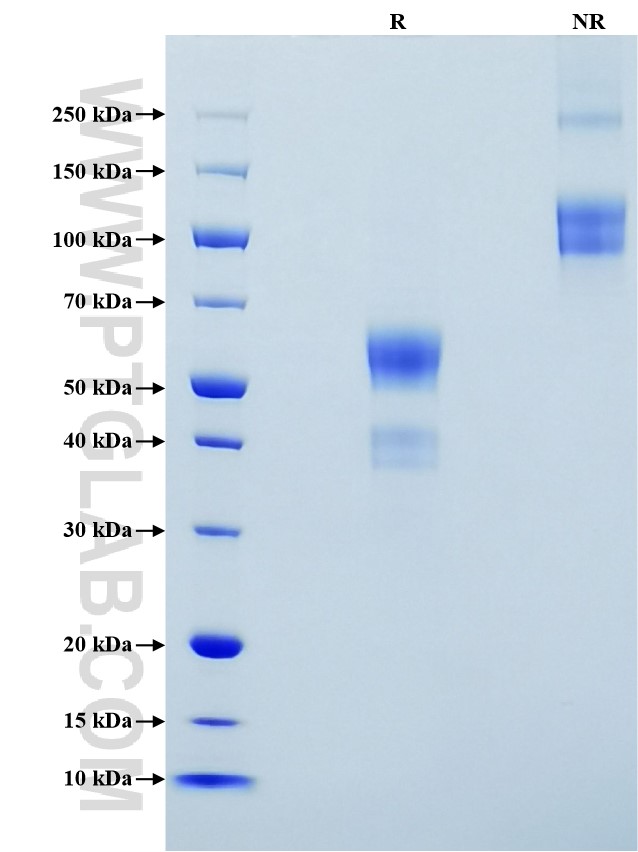Recombinant Human CD28 protein (hFc Tag)
种属
Human
纯度
>90 %, SDS-PAGE
标签
hFc Tag
生物活性
EC50: 26-104 ng/mL
验证数据展示
产品信息
| 纯度 | >90 %, SDS-PAGE |
| 内毒素 | <0.1 EU/μg protein, LAL method |
| 生物活性 |
Immobilized Human CD80 (Myc tag, His tag) at 2 μg/mL (100 μL/well) can bind Human CD28 (hFc tag) with a linear range of 26-104 ng/mL. |
| 来源 | HEK293-derived Human CD28 protein Asn19-Pro152 (Accession# P10747-1) with a human IgG1 Fc tag at the C-terminus. |
| 基因ID | 940 |
| 蛋白编号 | P10747-1 |
| 预测分子量 | 41.1 kDa |
| SDS-PAGE | 52-65 kDa, reducing (R) conditions |
| 组分 | Lyophilized from 0.22 μm filtered solution in PBS, pH 7.4. Normally 5% trehalose and 5% mannitol are added as protectants before lyophilization. |
| 复溶 | Briefly centrifuge the tube before opening. Reconstitute at 0.1-0.5 mg/mL in sterile water. |
| 储存条件 |
It is recommended that the protein be aliquoted for optimal storage. Avoid repeated freeze-thaw cycles.
|
| 运输条件 | The product is shipped at ambient temperature. Upon receipt, store it immediately at the recommended temperature. |
背景信息
Cluster of Differentiation 28 (CD28, also known as Tp44) is one of the proteins constitutively expressed on the surface of 80% of human T cells. CD28 is a highly glycosylated membrane protein, formed by two homodimer disulfide-linked peptides, which shares homology with the immunoglobulin superfamily. CD28 signals play a key role in many T cell processes including cytoskeletal remodeling, production of cytokines, survival, and differentiation. CD28 interactions with the B7 family of costimulatory ligands are essential for initiating antigen-specific T cell responses, upregulating cytokine expression and promoting T cell expansion and differentiation.
参考文献:
1.Hansen JA. et al. (1980). Immunogenetics. 10(1-4): 247-260. 2.Aruffo A. et al. (1987). Proc Natl Acad Sci U S A. 84(23): 8573-8577. 3.Jonathan H Esensten. et al. (2016). Immunity. 44(5):973-988. 4.D J Lenschow. et al. (1996). Annu Rev Immunol. 14:233-258.

